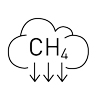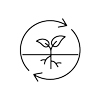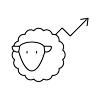Wool-growing can play a pivotal role in the solution, with innovative projects reducing methane emissions and enhancing productivity. Through cutting-edge research and collaboration, the wool industry is driving progress in emissions reduction, demonstrating a strong commitment to a greener future.
The global fashion and textiles industry contributes significantly to greenhouse gas emissions and climate change. The production, transportation and care of clothing all generate greenhouse gas emissions such as carbon dioxide, methane and nitrous oxide.
What is Methane?
Methane is a potent greenhouse gas that contributes to climate change. It is produced by a variety of sources, including fugitive emissions from mining and fracking as well as the digestive systems of ruminant animals such as sheep, goats, cattle and deer. When ruminants consume grass, microbes in their stomachs break down the cellulose which enables digestion and releases methane as a by-product. This digestive process is known as enteric fermentation.
Biogenic Methane vs Fossil Methane
The methane produced by ruminants such as sheep is ‘biogenic methane’ as it is part of the natural carbon cycle – on release to the atmosphere it gradually breaks down into CO2 and again becomes available to be taken up by plants through photosynthesis. In contrast, ‘fossil methane’ and CO2 from the mining and burning of coal, oil and gas add an extra burden on the atmosphere. This carbon is not part of the natural carbon cycle - it had been safely stored underground for millions of years, but is now being added to the atmosphere. The burning of fossil fuels, which is the dominant source of the world’s greenhouse gases, has changed the natural balance in the carbon cycle and increased greenhouse warming responsible for climate change.
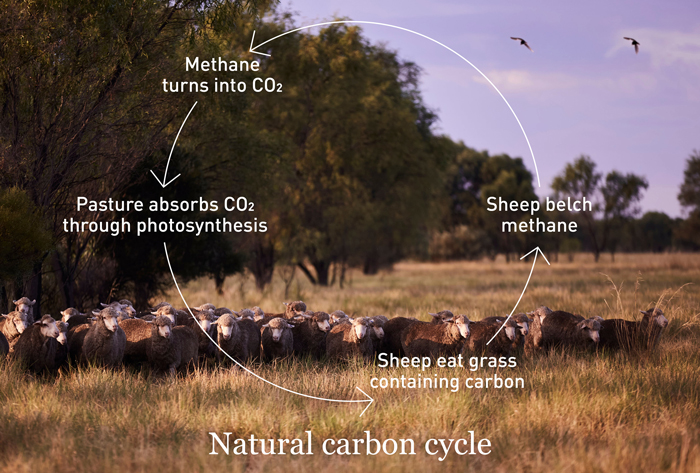

Reducing Methane Emissions in the Australian Wool Industry
The wool industry is committed to reducing methane emissions from grazing sheep and Woolmark is proactively investing in a variety of research to achieve this outcome. Reducing emissions intensity, as well as reducing total emissions, are primary focus areas for the Australian wool industry. Emissions intensity can be reduced by increasing flock productivity, which also importantly may support better financial results in farming enterprises. Reducing methane emissions from enteric fermentation is also being thoroughly researched and trialled via innovative solutions such as anti-methanogenic feed additives, and low methane genetics.
多层功能性
对羊大有好处,对人堪称完美。在展开冒险征途前,无论选择底层贴肤层、中层或外层,抑或三者搭配穿着,美丽诺羊毛都能让您受益无穷。
底层内层系列服装
底层内层系列服装
无论在暖和天气保持凉爽,或在冷寒冷天气抵御严寒,内层系列服装底层能在身体和外界环境之间提供一层保护效果。炎热夏季,底层内层系列能排汗吸湿,让湿气得到蒸发,并带来清爽舒适感。冬季时,它能提供成为一层优异的保暖层。
中层系列服装
中层系列服装
美丽诺羊毛中层能抵御寒冷,和身体一起呼吸,避免穿着有闷热感。美丽诺羊毛能吸收身体排出的湿气,并将之释放到大气中,从而保持平衡最佳的微气候环境,带来舒适穿着体验。
外层系列服装
外层系列服装
100%美丽诺羊毛防风雨、防紫外线和防火——这就是美丽诺的超凡功能。无论跋涉深谷或行走高山,美利奴羊毛外层系列都可带来极致保护。
Accelerate Nature Positive production
The wool industry is moving beyond net zero, accelerating towards a nature positive future. With initiatives focused on carbon sequestration and methane reduction, it's actively cutting its climate impact. Here are three key categories where action is already underway.
Methane emissions reduction in livestock
A collection of nine research and development projects are working towards identifying and assessing strategies to reduce methane emissions from grazing sheep using feed additives.
Carbon storage on wool farms
Research and training to support Australian woolgrowers understand and take up profitable and sustainable pathways to reduce carbon emissions and increase carbon storage in soil and vegetation.
Enhanced sheep productivity and profitability
10-year Merino Lifetime Productivity (MLP) research project captures data from different environments, genetics and Merino types to improve sheep productivity and profitability, through increased feed efficiency, resilience, survival and lower methane.
Early research results show a 50% methane reduction when consuming Asparagopsis.
MERiL1 Progress Report (Milestone 3) by the University of New England, 15 June 2023

Red algae Asparagopsis seaweed has been found to reduce sheep methane emissions. PHOTO: Courtesy Sea Forest.
How feed additives and sheep can help to tackle climate change
Woolgrower-funded research is identifying feed additives that can help reduce methane emissions in grazing sheep. Early studies show options like Bovaer, asparagopsis (red algae), and essential oils (for example, Agolin® Ruminant) can significantly cut emissions. Led by the University of New England, the research aims to find the best ways to deliver these feed additives while also boosting productivity. Woolmark is also co-funding nine projects supported by the Australian Government’s Methane Emissions Reduction in Livestock (MERiL) grants.

Asparagopsis grown by Sea Forest in Tasmania, Australia. PHOTO: Courtesy Sea Forest
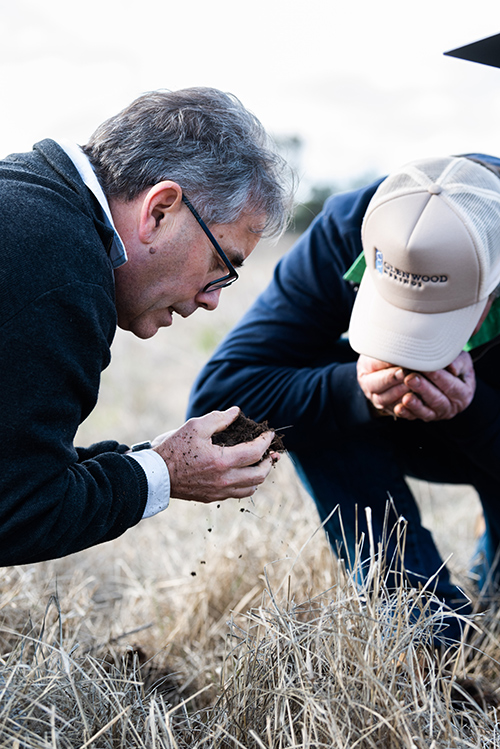


Carbon Storage Partnership
Evidence is growing that biodiversity improves as carbon sequestration increases. The Carbon Storage Partnership is providing regionally relevant pathways for Australian woolgrowers to improve their natural capital and sequester carbon. It aims to provide baseline data for biophysical, economic and environmental status of the case study regions, and then provide regionally relevant adaptations to store carbon and improve biodiversity on farm.
The Carbon Storage Partnership aims to:
-
Benchmark and compare the effects of grazing and soil management, planting trees and holistic farm management across wool-growing farms.
-
Co-design tools that allow improvement in natural capital, biodiversity, profitability, productivity and reduction of net farm greenhouse gas emissions for specific regions across Australia.
-
Inform Australian farmers on the most effective ways to improve the natural capital for their environment and enterprise mix.

